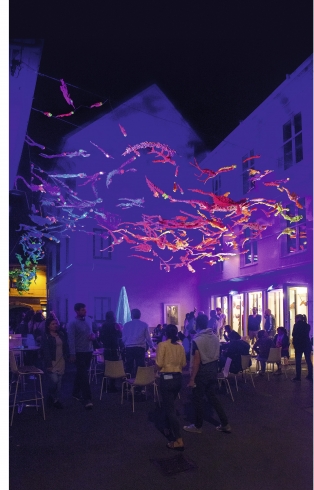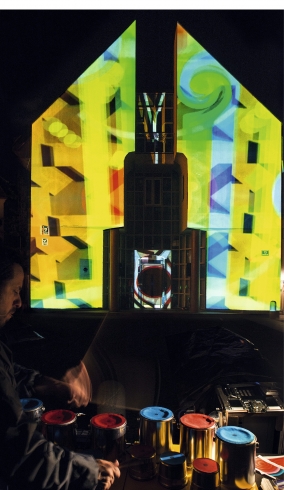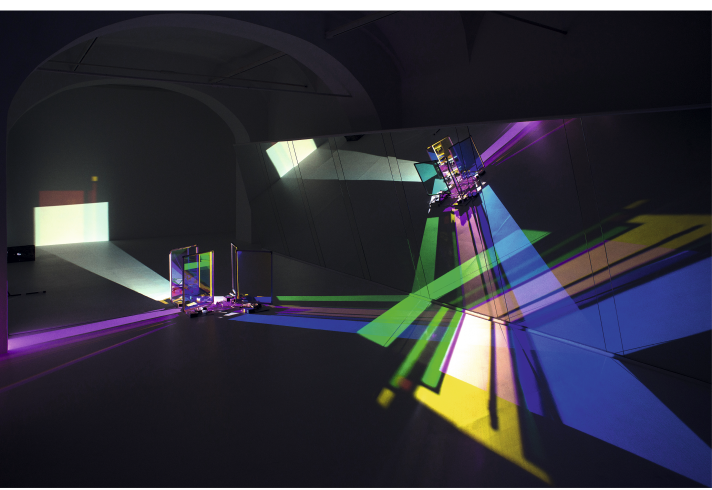Intro
Ljusgerilla i färg
Vill du fortsätta läsa?
Denna artikel är låst och endast tillgänglig för prenumeranter som skapat konto på ljuskultur.se. Som prenumerant kan du läsa samtliga artiklar från det senaste numret på nätet och får tillgång till ett växande arkiv av tidningens rika material. Är du redan prenumerant klicka på Logga in nedan för att logga in eller skapa konto.
Bli prenumerantRefufish av Matej Bizovičar symboliserar den samtida flyktingkrisen. Konstnären har använt en färgstark fiskeskola för att symbolisera flyktingarna, fisk som med sin rörelsefrihet över världens hav representerar det motsatta. I verket finns varelser av olika amorfa former: de satiriserar bilder från sci-fi-filmer, expansiva organismer, virus som flyr från labbet… Dessa föreningar uppmuntrar tittaren att tänka på sin egen gamla rädsla för olikhet.
Den tolfte upplagan av International Lighting Guerilla Festival i Ljubljana klädde Sloveniens vackra huvudstad i färg!
Från den 11 maj till den 16 juni visades både ljusinstallationer, ljussatta föremål och projektioner på gator och torg men även i två galleriutställningar. Valet av färg som årets tema baserar sig på att färger är så nära kopplat till ljus. De utvalda projekten, bland dem många helt nya produktioner, utforskade den rika symboliken och uttrycksförmågan hos färgers nära koppling till ljus.
Ljusfestivalen i Ljubljana startade för tolv år sedan som en presentation av Transnational Lighting Detectives – en ideell grupp dedikerad till studier av ljuskultur i världens olika städer genom praktiska metoder. Evenemanget har vuxit år för år och i år uppskattar man att festivalen hade en publik på över 40 000 personer.
Medlemsresa 2019
Svenska Belysningssällskapet planerar en medlemsresa
i slutet av maj till nästa års ljusfestival. Är du intresserad?
Kontakta oss på: info@ljuskultur.se
Några frågor till Katerina Mirovic, kurator för ljusfestivalen:
How come the lighting festival started for 12 years ago?
”The festival started 12 years ago, since I was very much interested in Aleksandra Stratimmirovic’s work. We knew each other for some time and as a theater light designer she was involved in few projects we organized. The first year we organized presentation of Transnational Lighting Detectives, who’s member Aleksandra is. It’s a very interesting group of light designers that also does lots of educational works with both ordinary people and experts. They do a lot of researching and we organized their presentational exhibition, exhibition of photos of the nightscapes around the world and a workshops: Villains and Heroes of the Light, discovering bad and good public lighting, and a practical workshop transforming an underpassage in the center of the city.
We really enjoyed working together and we decided to continue with a festival dedicated to light art. With our organisation we’ve been focused mostly in overlooked or marginal contemporary art, such as graffiti, comics …, and for me it was a logical step, since there was almost no artists or projects devoted to light art here.”
How has it changed/developed since the beginning?
”Well, the first edition was much smaller and it was focused on Transnational Lighting Detectives. Further editions each has a different topic and are focused on presentation of light art from foreign countries (mostly already made projects) and new works by Slovene artists. We are mostly also producers of these works and we also organize workshops. We regularly work with various educational institutions such as Faculty of Architecture, Textile Department of Faculty of Natural Sciences and Technology, Academy of Fine Arts …We did follow the same interests: light art, public space, production and education.
In years the festival grew, but we are still very low budget festival, which also brings a lot of limitations. We depend much on understanding of artists of our situation, we can choose only artworks that can survive in the public space with out 24-hour security, and nothing would be possible without a small but very effective technical crew … And without cooperation of many other cultural institutions such as City Museum/Match Gallery, ZRC SAZU, Dance Theatre Ljubljana, Ljudmila …, the program would be much smaller.
In the years we pointed out different less known spaces to general public, we established long-term co-operations with institutions and and which is a great success, we established a Light Park, where we installed 2 ’permanent’ light art pieces, installation by Aleksandra Stratimirovic and sculpture by Slovene artist Bostjan Drinovec. The park is situated at the edge of the center of the city at the Gradascica river.
Each year we also do smaller edition (aruound 11 artowrks outdoor) in another Slovene city. These editions are showing artworks that were produced for previous editions of Svetlobna gverila, mostly by Slovene artists, but we have also couple of donations of foreign artist, This September the Re:Action of Svetlobna gverila will take place at Izola, town on Slovenian coast.
Matjaz Brulc, curator, critic and writer, joined our team as curator and producer.”
How many visitors do you have yearly?
”It’s hard to say since we don’t count visitors, except in the gallery spaces. This year both Match Gallery and Cukrarna Pallace had each almost 4 000 visitors, and we assume that since the festival takes place for a month that outdoor artworks in the center of the city have been seen by over 40 000 people. The Re:Action edition has smaller numbers since it takes place in smaller cities or towns.
What is also important for us is how many artists and other people participated. This year we hosted around 30 artists and engaged around 35 students and pupils, and this is quite a success I believe, for which we have to thank also to professors, which usually take very active part.”
Publicerad den 28 augusti 2018
Ur Ljuskultur Nummer 4, 2018
Du kanske också gillar:
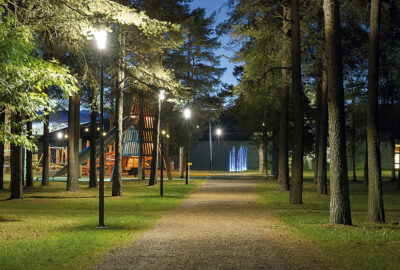
Notiser
Allt är upplyst i nya Hedlundadungen
Tyréns landskapsarkitekter och ljusdesigner har skapat en plats som inbjuder till lek och rörelse för…
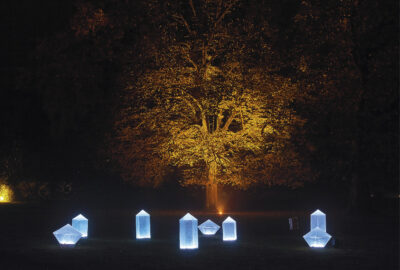
Evenemang
Dark Light Poetry – hur lite är nog?
En spännande och tankeväckande vandring genom ett antal ljusverk skapade av konstnärer, designers, arkitekter och…
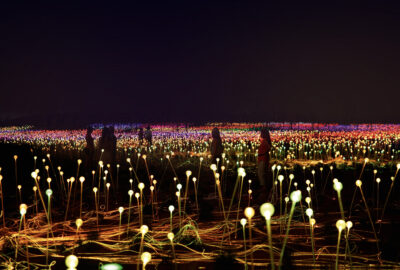
Ljuskonst
Den magiska stillheten vid Uluru
Det var vid sandstensmonoliten Uluru som fröet till Field of Light såddes för 25 år…


